Nissan Qashqai vs Peugeot 308 SW – Which car suits you better?
Everyday use, family trips or long-distance drives – here’s where the differences show.
Discover whether Nissan Qashqai or Peugeot 308 SW fits your lifestyle better.
Costs and Efficiency:
Looking at overall running costs, both models reveal some interesting differences in everyday economy.
Nissan Qashqai has a barely noticeable advantage in terms of price – it starts at 29400 £, while the Peugeot 308 SW costs 30100 £. That’s a price difference of around 729 £.
Fuel consumption also shows a difference: Peugeot 308 SW manages with 0.80 L and is therefore significantly more efficient than the Nissan Qashqai with 5.10 L. The difference is about 4.30 L per 100 km.
Engine and Performance:
Under the bonnet, it becomes clear which model is tuned for sportiness and which one takes the lead when you hit the accelerator.
When it comes to engine power, the Peugeot 308 SW has a slight edge – offering 195 HP compared to 190 HP. That’s roughly 5 HP more horsepower.
In acceleration from 0 to 100 km/h, the Peugeot 308 SW is minimal quicker – completing the sprint in 7.70 s, while the Nissan Qashqai takes 7.90 s. That’s about 0.20 s faster.
In terms of top speed, the Peugeot 308 SW performs minimal better – reaching 225 km/h, while the Nissan Qashqai tops out at 206 km/h. The difference is around 19 km/h.
There’s also a difference in torque: Nissan Qashqai pulls hardly perceptible stronger with 330 Nm compared to 300 Nm. That’s about 30 Nm difference.
Space and Everyday Use:
Cabin size, boot volume and payload all play a role in everyday practicality. Here, comfort and flexibility make the difference.
Both vehicles offer seating for 5 people.
In curb weight, Nissan Qashqai is barely noticeable lighter – 1420 kg compared to 1475 kg. The difference is around 55 kg.
In terms of boot space, the Peugeot 308 SW offers slightly more room – 608 L compared to 504 L. That’s a difference of about 104 L.
In maximum load capacity, the Peugeot 308 SW performs a bit better – up to 1634 L, which is about 187 L more than the Nissan Qashqai.
When it comes to payload, Nissan Qashqai minimal takes the win – 520 kg compared to 500 kg. That’s a difference of about 20 kg.
Who wins the race?
The Peugeot 308 SW proves to be outperforms in nearly all aspects and therefore becomes our DriveDuel Champion!
Peugeot 308 SW is the better all-rounder in this comparison.
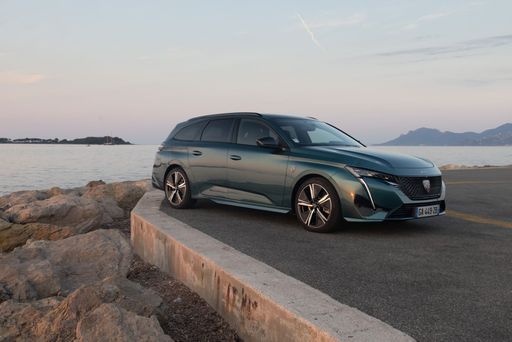
Peugeot 308 SW
Nissan Qashqai
The Nissan Qashqai stands out in the compact SUV market with its sleek design and versatile features. Its smooth ride and refined interior make it a popular choice for both city driving and weekend adventures. Advanced safety technologies and user-friendly infotainment add to its appeal, ensuring a comfortable and secure driving experience for all passengers.
details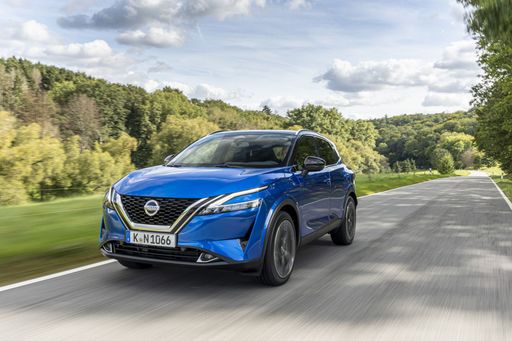 @ Nissan
@ Nissan
 @ Nissan
@ Nissan
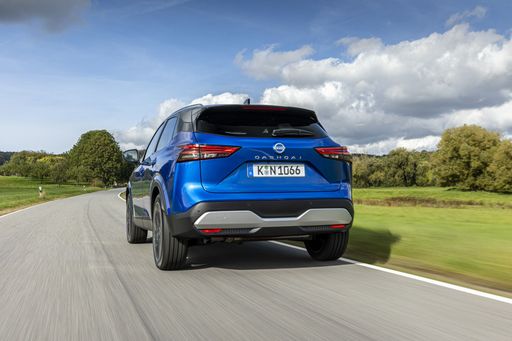 @ Nissan
@ Nissan
 @ Nissan
@ Nissan
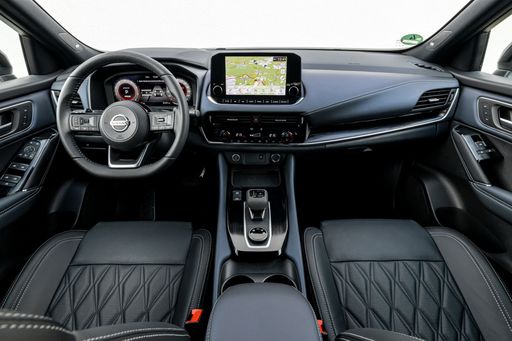 @ Nissan
@ Nissan
Peugeot 308 SW
The Peugeot 308 SW impresses with its stylish design and practical nature, making it a standout in the estate car category. Its spacious interior is complemented by a high-quality finish, offering comfort for both the driver and passengers. The vehicle also boasts advanced technology features, ensuring a modern and enjoyable driving experience.
details @ media.stellantis.com
@ media.stellantis.com
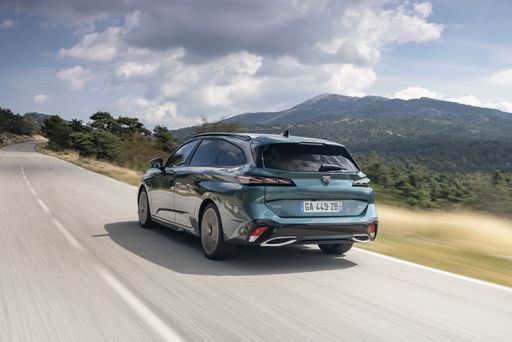 @ media.stellantis.com
@ media.stellantis.com
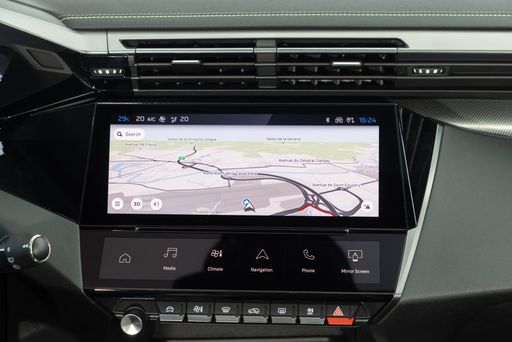 @ media.stellantis.com
@ media.stellantis.com
 @ media.stellantis.com
@ media.stellantis.com
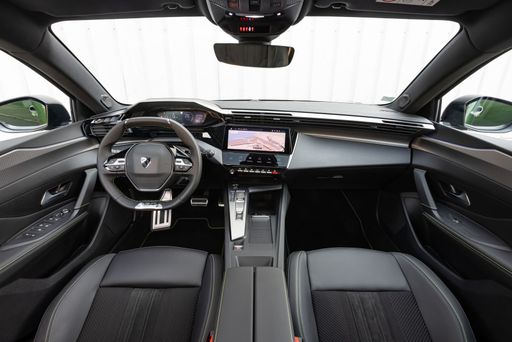 @ media.stellantis.com
@ media.stellantis.com

|

|
|
|
|
Costs and Consumption |
|
|---|---|
|
Price
29400 - 42500 £
|
Price
30100 - 42700 £
|
|
Consumption L/100km
5.1 - 6.8 L
|
Consumption L/100km
0.8 - 5.1 L
|
|
Consumption kWh/100km
-
|
Consumption kWh/100km
15.30 kWh
|
|
Electric Range
-
|
Electric Range
78 - 410 km
|
|
Battery Capacity
-
|
Battery Capacity
51 kWh
|
|
co2
116 - 154 g/km
|
co2
0 - 134 g/km
|
|
Fuel tank capacity
55 L
|
Fuel tank capacity
42 - 53 L
|
Dimensions and Body |
|
|---|---|
|
Body Type
SUV
|
Body Type
Estate
|
|
Seats
5
|
Seats
5
|
|
Doors
5
|
Doors
5
|
|
Curb weight
1420 - 1665 kg
|
Curb weight
1475 - 1791 kg
|
|
Trunk capacity
479 - 504 L
|
Trunk capacity
467 - 608 L
|
|
Length
4425 mm
|
Length
4636 mm
|
|
Width
1835 mm
|
Width
1852 mm
|
|
Height
1625 mm
|
Height
1442 mm
|
|
Max trunk capacity
1422 - 1447 L
|
Max trunk capacity
1402 - 1634 L
|
|
Payload
466 - 520 kg
|
Payload
409 - 500 kg
|
Engine and Performance |
|
|---|---|
|
Engine Type
Petrol MHEV, Full Hybrid
|
Engine Type
Diesel, Electric, Petrol MHEV, Plugin Hybrid
|
|
Transmission
Manuel, Automatic
|
Transmission
Automatic
|
|
Transmission Detail
Manual Gearbox, CVT, Reduction Gearbox
|
Transmission Detail
Automatic Gearbox, Reduction Gearbox, Dual-Clutch Automatic
|
|
Drive Type
Front-Wheel Drive, All-Wheel Drive
|
Drive Type
Front-Wheel Drive
|
|
Power HP
140 - 190 HP
|
Power HP
130 - 195 HP
|
|
Acceleration 0-100km/h
7.9 - 10.2 s
|
Acceleration 0-100km/h
7.7 - 10.9 s
|
|
Max Speed
170 - 206 km/h
|
Max Speed
170 - 225 km/h
|
|
Torque
240 - 330 Nm
|
Torque
230 - 300 Nm
|
|
Number of Cylinders
3 - 4
|
Number of Cylinders
3 - 4
|
|
Power kW
103 - 140 kW
|
Power kW
96 - 144 kW
|
|
Engine capacity
1332 - 1497 cm3
|
Engine capacity
1199 - 1598 cm3
|
General |
|
|---|---|
|
Model Year
2024
|
Model Year
2023 - 2025
|
|
CO2 Efficiency Class
E, D
|
CO2 Efficiency Class
D, A, C, B
|
|
Brand
Nissan
|
Brand
Peugeot
|
Is the Nissan Qashqai offered with different drivetrains?
Available configurations include Front-Wheel Drive or All-Wheel Drive.
The prices and data displayed are estimates based on German list prices and may vary by country. This information is not legally binding.
